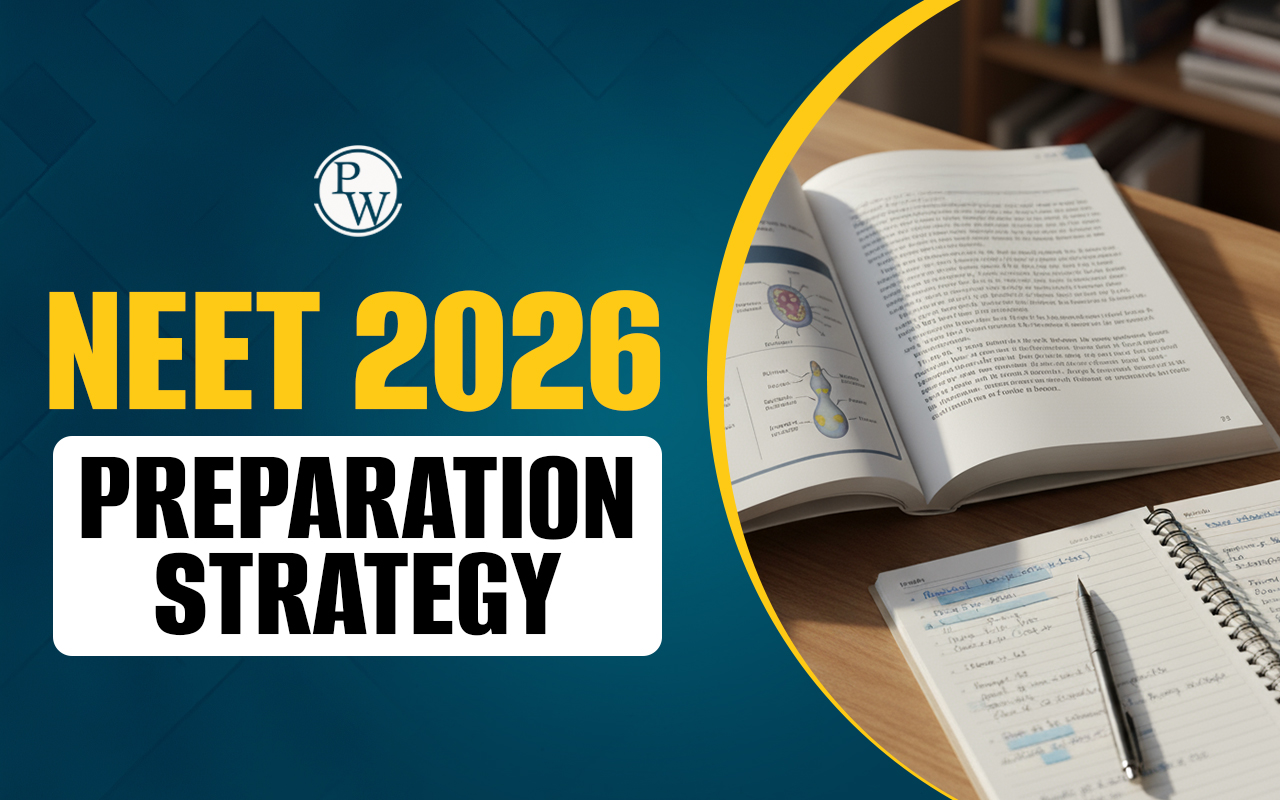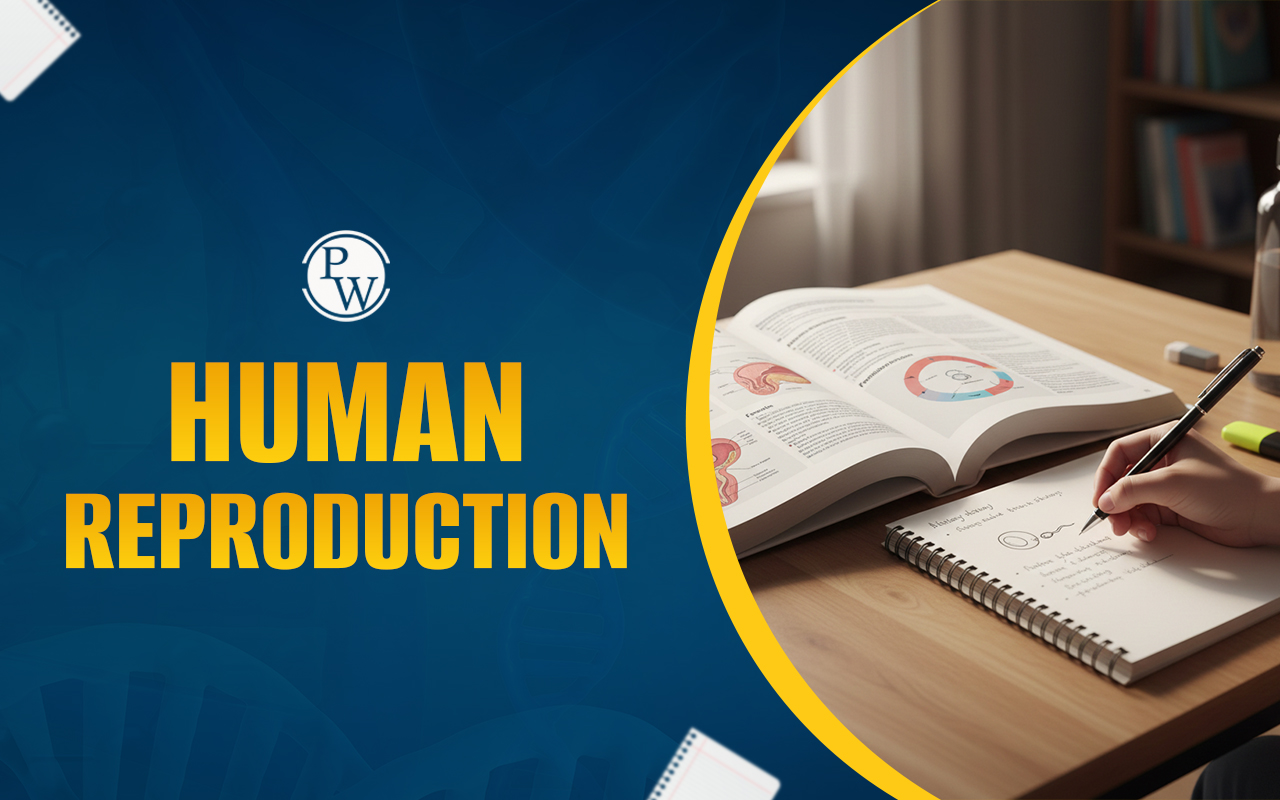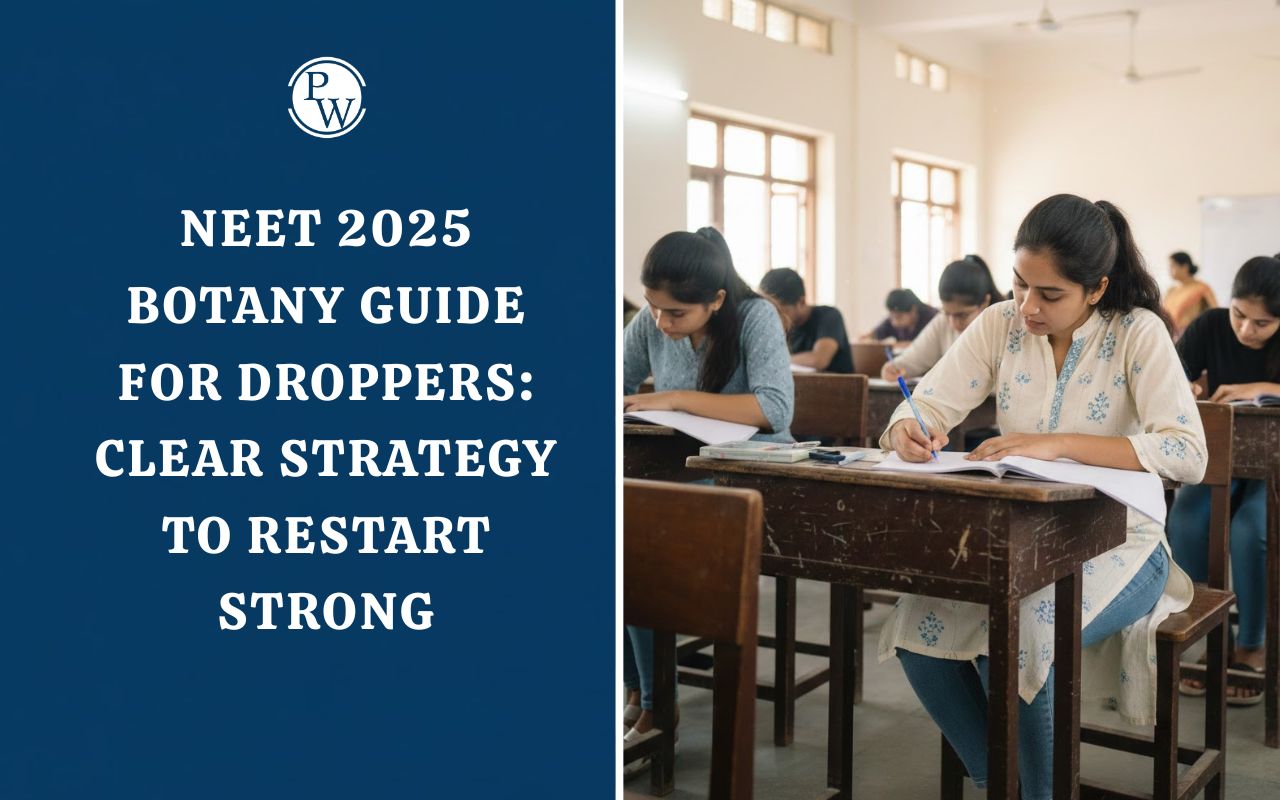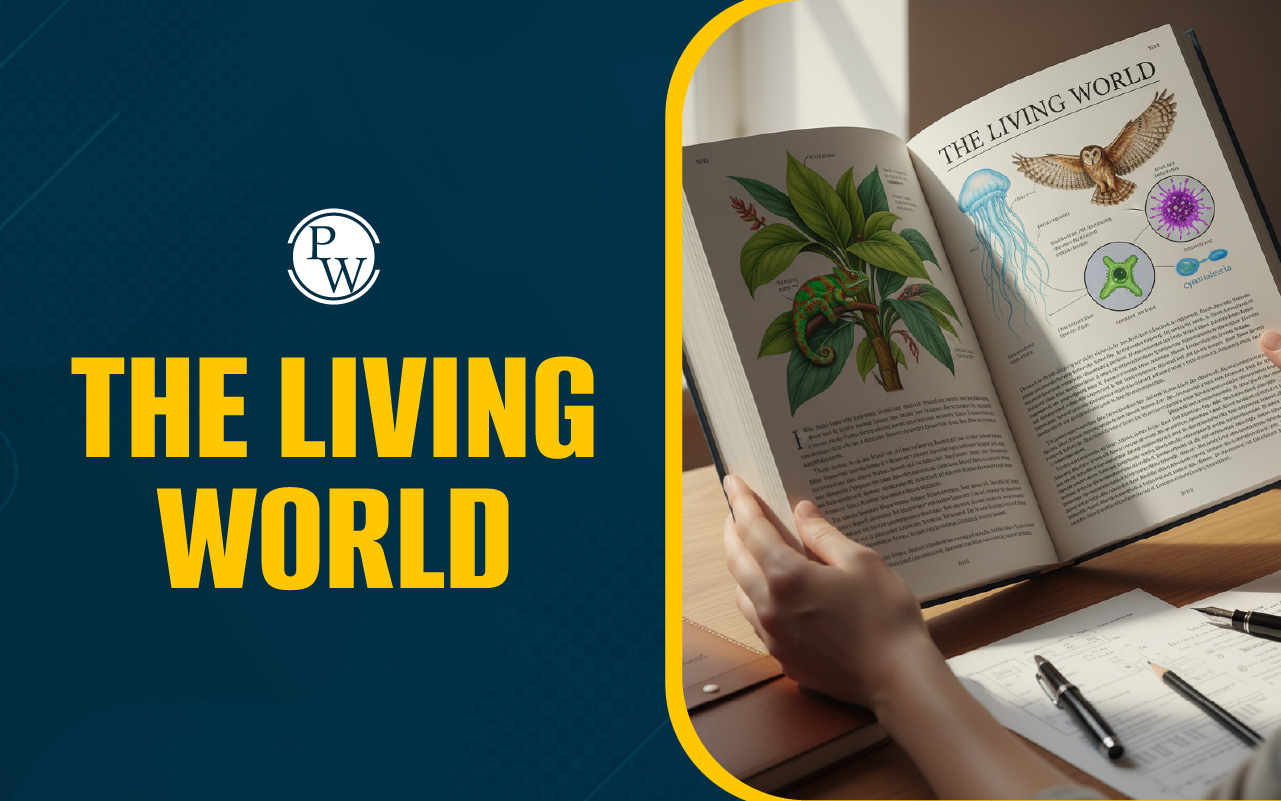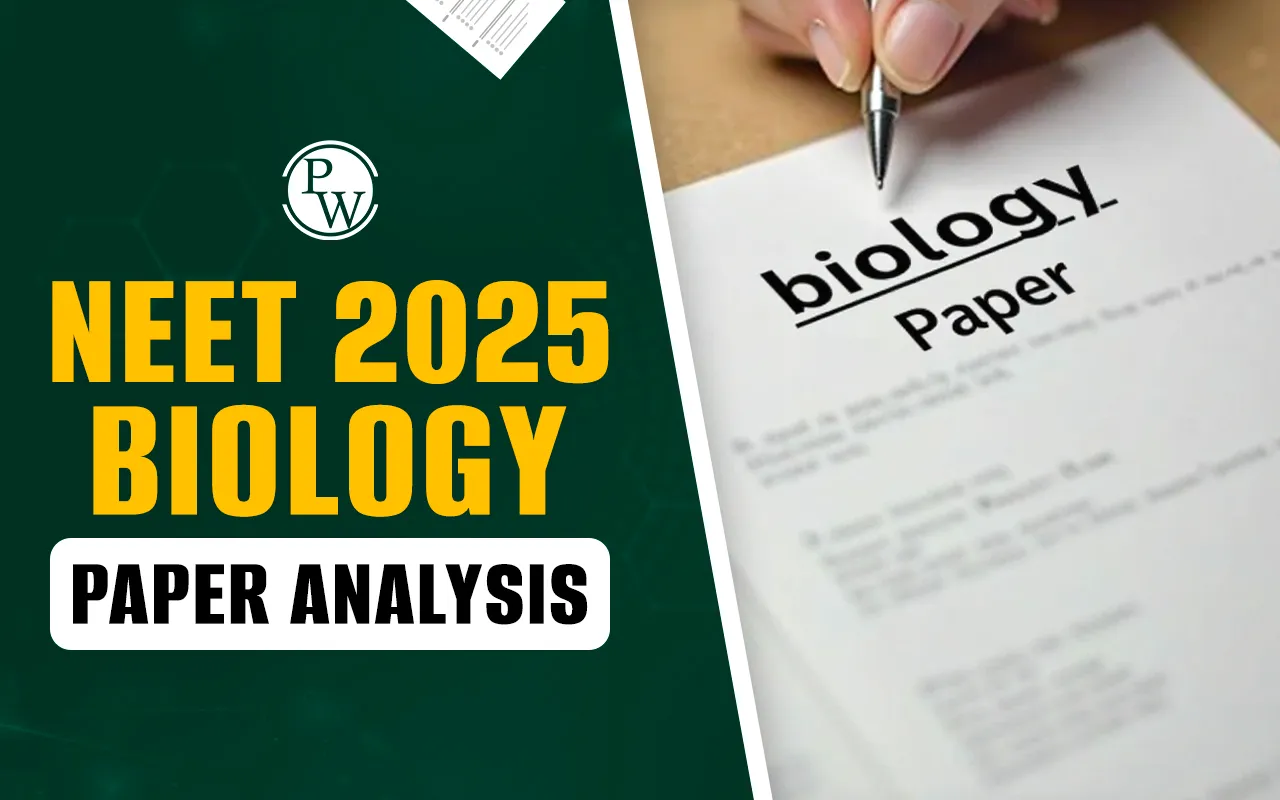
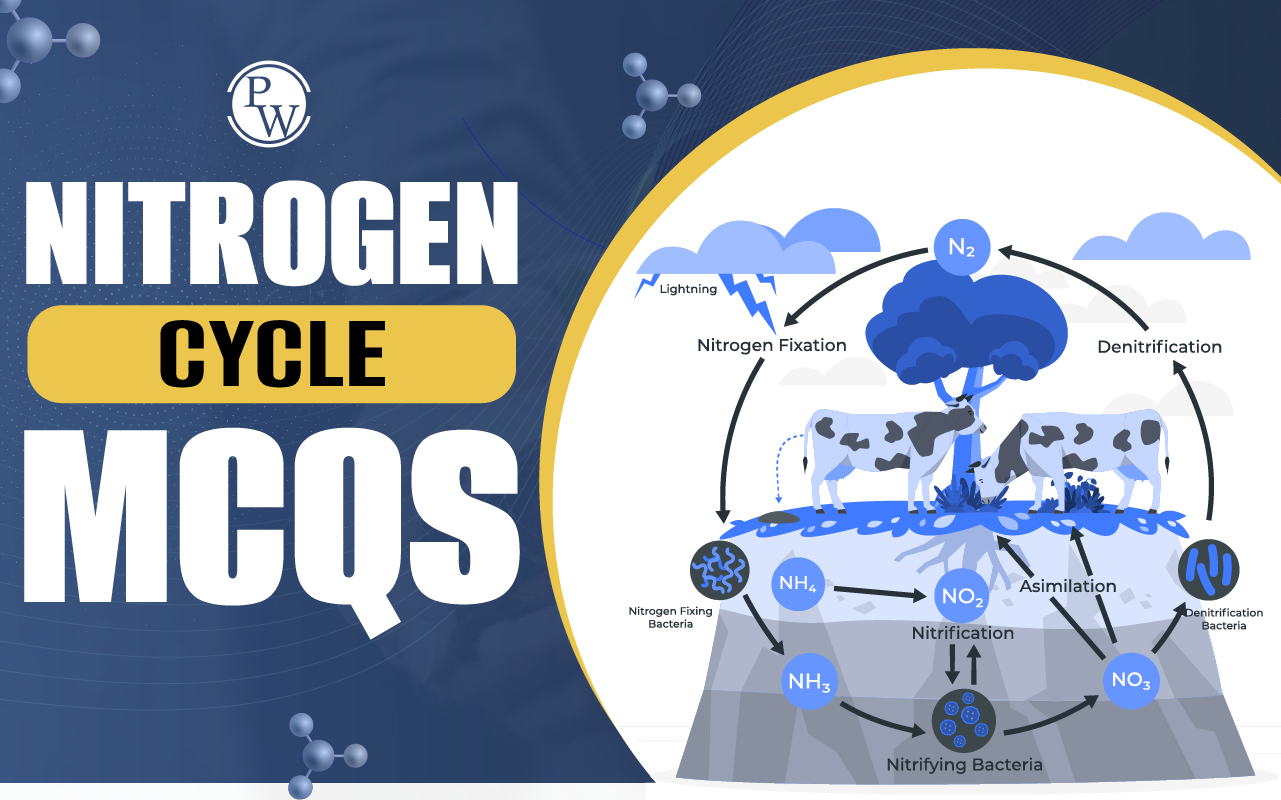
Nitrogen Cycle MCQ Introduction
Nitrogen Cycle MCQ: The Nitrogen Cycle, is a fundamental process that plays a crucial role in maintaining the balance of our ecosystem. It begins with nitrogen fixation, where atmospheric nitrogen gas is converted into ammonia by bacteria living on plant roots or soil. This ammonia can then be converted into nitrite and nitrate ions through nitrification, essential nutrients for plants to grow and thrive. Once plants absorb these compounds, they become part of their tissues and eventually enter the food chain as animals consume them.
The cycle continues as decomposers break down organic matter from dead organisms, releasing ammonia into the soil for another round of nitrification. Finally, denitrification occurs when specific bacteria convert nitrates back into atmospheric nitrogen gas, completing the cycle. Understanding this intricate process is critical for ensuring sustainable agriculture practices and preserving our planet's natural resources for future generations.| NEET 2024 Exam Important Links | |
|---|---|
| NEET 2024 Syllabus | NEET Biology Notes |
| NEET 2024 Eligibility Criteria | NEET 2024 Exam Pattern |
| NEET Previous Year Question Papers | NEET 2024 Admit Card |
Nitrogen Cycle MCQ
Q 1. Nitrogen-fixing nodules on the roots of non-legume plants such as Alnus are produced by
- Rhizobium
- Beijernickia
- Azotobacter
- Frankia
Answer: d, Frankia
Explanation: Frankia is a group of actinomycete soil bacteria that can fix nitrogen from the atmosphere and form nitrogen-fixing nodules on the roots of certain plants. It is an integral part of the global nitrogen cycle, as it increases atmospheric nitrogen available for other organisms.
Q 2. An organism used as a biofertilizer for raising soybean crops is
- Azospirillum
- Rhizobium
- Nostoc
- Azotobacter
Answer: b, Rhizobium
Explanation: Rhizobium is a bacteria that establishes a symbiotic relationship with legume plants, such as soybeans. This microorganism fixes atmospheric nitrogen into an accessible form and thereby provides natural fertilizer to the plant, consequently providing carbohydrates and other necessary nutrients in return. With its aid, crops experience improved growth, higher yield, and reduced reliance on synthetic nitrogen-based fertilizers. Although similar microorganisms like Azospirillum, Nostoc, and Azotobacter are helpful for agricultural purposes, Rhizobium is especially beneficial for growing soybean crops.
Q 3. Which of the following is a symbiotic nitrogen fixer?
- Glomus
- Azotobacter
- Frankia
- Azolla
Answer: c, Frankia
Explanation: Frankia is a symbiotic nitrogen fixer, meaning it fixes nitrogen from the air and makes it available for plants. It forms a mutualistic relationship with many types of plants, which benefit from the added nitrogen while providing shelter and other resources. Glomus, Azotobacter, and Azolla are all free-living nitrogen fixers, meaning they can fix nitrogen independently from any host plant.
Q 4. Symbiotic Nitrogen-fixing cyanobacteria are present in all except
- Anthoceros
- Azolla
- Cycas
- Gnetum
Answer: d, Gnetum
Explanation: Symbiotic Nitrogen-fixing cyanobacteria are present in Anthoceros, Azolla, and Cycas but not in Gnetum.
Q 5. Anabaena, a Nitrogen fixer, is present in the root pockets of
- Marselia
- Salvinia
- Pistia
- Azolla
Answer: d ,Azolla
Explanation: Azolla forms a symbiotic relationship with the nitrogen-fixing cyanobacterium Anabaena. The small aquatic fern is its home, providing shelter and nutrients in specialized structures known as root pockets. This connection is advantageous to both parties - Azolla obtains fixed nitrogen from Anabaena, while the cyanobacterium gains a safe environment and nutrient supply within the root pockets of the fern.
Q 6. Which of the following is false?
- Anabaena and Nostoc can fix nitrogen in a free-living state also
- Under free-living conditions, root nodule-forming nitrogen fixers live as aerobes
- All proteins, cell membranes, and nucleic acids contain phosphorus
- Nitrosomonas and Nitrobacter are chemoautotrophs.
Answer: b, Under free-living conditions, root nodule-forming nitrogen fixers live as aerobes
Explanation: Root nodule-forming nitrogen fixers, such as Rhizobium, Bradyrhizobium, and Frankia, can fix nitrogen symbiotic with leguminous plants. These bacteria form nodules on the roots of plants and fix atmospheric nitrogen into a form that the plant can utilize. However, these bacteria are facultative anaerobes, meaning they can live in aerobic and anaerobic conditions. In the root nodules, where nitrogen fixation occurs, the bacteria live in low-oxygen environments. They can tolerate anaerobic conditions but may not thrive as aerobes under free-living conditions.
Therefore, the correct statement is that root nodule-forming nitrogen fixers do not necessarily live as aerobes under free-living conditions.Q 7. If all nitrogenase enzymes are inactivated by radiation, then there will be no:-
- Fixation of atmospheric nitrogen
- In legumes, nitrate is converted to nitrite
- In soil, ammonium is converted to nitrate
- Fixation of nitrogen in legumes
Answer: a, Fixation of atmospheric nitrogen.
Explanation: Nitrogenase enzymes are responsible for the transformation of atmospheric nitrogen (N2) into a form that can be used by organisms, such as ammonia (NH3) or ammonium ions (NH4+). This process is known as nitrogen fixation. Nitrogen fixation is crucial for nitrogen availability, an essential element for synthesizing proteins and other vital molecules.
The other processes mentioned, such as conversion from nitrate to nitrite in legumes and conversion from ammonium to nitrate in the soil, involve different enzymes and pathways. These processes are not directly dependent on nitrogenase activity and can still occur even if nitrogen fixation is disrupted.Q 8. Splitting of dinitrogen molecule into free nitrogen atoms in biological Nitrogen fixation is carried out by
- Hydrogenase
- nitrogenase
- dinitrogenase
- nitrate reductase
Answer: b, nitrogenase
Explanation: The splitting of the dinitrogen molecule into a free nitrogen atom in biological nitrogen fixation is carried out by nitrogenase. Nitrogenase is an enzyme that catalyzes the conversion of molecular nitrogen (N2) to ammonia (NH3). This process is also known as dinitrogen reduction, and it involves the removal of atmospheric nitrogen to biologically available forms.
Q 9. The conversion of amino acids to ammonium by soil decomposers is called
- ammonification
- mineralization
- deamination
- Both a and b
Answer: d, Both a and b
Explanation: The conversion of amino acids to ammonium by soil decomposers is called ammonification, while the transformation of organic nitrogen to inorganic nitrogen through bacterial processes is called mineralization. Deamination is the process of converting an amino acid to an amine, releasing ammonia in the process.
Q 10. Industrial fixation is accomplished by
- Helmonts process
- Haber process
- Friedel- Crafts reaction
- Reimer Tiemann Reaction
Answer: b, Haber process
Explanation: The other three reactions are all organic chemistry reactions, while the Haber process is a chemical reaction used to produce ammonia from nitrogen and hydrogen at high temperatures and pressures. This process is essential in industrial nitrogen fixation, allowing for commercial production of fertilizer.

Q 11. To fix one molecule of nitrogen
- 6 ATP molecules are required
- 3 ATP molecules are required
- 16 ATP molecules are required
- 20 ATP molecules are required
Answer: c, 16 ATP molecules are required
Explanation: The amount of ATP molecules required to fix one molecule of Nitrogen is 16. The Nitrogen Cycle is a complex process that requires this amount of energy to convert the atmospheric nitrogen gas into a form that plants and other organisms can use. The cycle starts with the conversion of nitrogen gas into ammonia, which then goes through a series of steps before it is finally converted back into nitrogen gas. At each step, ATP molecules are used to help catalyze the reactions, thus requiring 16 ATP molecules in total for each fixed molecule of Nitrogen.
Q 12. The root nodules of legumes contain a pink pigment that has a high affinity for oxygen is
- nod hemoglobin
- leghaemoglobin
- hemoglobin
- bacterial hemoglobin
Answer: b, leghemoglobin
Explanation: The pink pigment present in the root nodules of legumes is called leghaemoglobin, and it serves as an oxygen-binding protein. It binds oxygen with high affinity and enhances nitrogen fixation in the rhizobia-legume symbiosis. Bacterial hemoglobins are also found in some species of rhizobia and help to increase the efficiency of nitrogen fixation.
Q 13. Conversion of NO2- to NO3- is carried out by
- Nitrosomonas
- Nitrososcoccus
- Nitrobacter
- Clostridium
Answer: c, Nitrobacter
Explanation: Nitrobacter is a genus of chemoautotrophic bacteria that oxidizes ammonium into nitrite and then convert nitrite to nitrate, which is an important step in the biological nitrogen cycle.
Q 14. With regard to the biological nitrogen fixation by Rhizobium in association with soybean, which one of the following statement/ statements does not hold true?
- Nitrogenase may require oxygen for its functioning.
- Nitrogenase is Mo-Fe protein
- Leg-haemoglobin is a pink-colored pigment.
- Nitrogenase helps to convert Nz gas into two molecules of ammonia.
Answer: a, Nitrogenase may require oxygen for its functioning.
Explanation: Nitrogenase requires anaerobic conditions in order for it to work. Consequently, legume plants develop specialized structures called nodules, as a protection against oxygen that could damage the enzyme irreversibly. Oxygen is kept low here through various mechanisms such as the synthesis of leghemoglobin which binds oxygen and creates an oxygen-free space.
Q 15. Which process converts ammonium ions to nitrite and then to nitrate?
- Nitrification
- Nitrogen fixation
- Denitrification
- Ammonification
Answer: a, Nitrification
Explanation: The process that converts ammonium ions to nitrite and then to nitrate is called Nitrification. During nitrification, bacteria in the soil convert the ammonium ions into nitrite and then into nitrate. Nitrification also plays an important role in the global nitrogen cycle as it helps to return nitrogen from organic matter back into the environment.
Nitrogen Cycle MCQ FAQs
What is nitrogen cycle Class 11 NEET?
What is the nitrogen cycle MBBS?
What topic is the nitrogen cycle?
What is nitrogen assimilation 12th biology?
What are the 7 steps of the nitrogen cycle?


